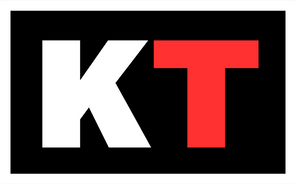HIPAA Regulations: A Guide for Healthcare Providers
As a healthcare provider, it is important to understand the Health Insurance Portability and Accountability Act (HIPAA) regulations. These regulations were put in place to protect patients' personal health information (PHI) and ensure its confidentiality. In this guide, we will cover everything healthcare providers need to know about HIPAA regulations, including the history of HIPAA, HIPAA compliance, and penalties for non-compliance.
What is HIPAA?
HIPAA is a federal law that was enacted in 1996 to ensure the privacy and security of patients' PHI. This law applies to all healthcare providers who transmit or maintain electronic PHI (ePHI). HIPAA has two main parts: the Privacy Rule and the Security Rule.
The Privacy Rule
The Privacy Rule sets standards for the use and disclosure of patients' PHI. It requires healthcare providers to obtain written consent from patients before using or disclosing their PHI for any reason other than treatment, payment, or healthcare operations. It also gives patients the right to access and receive copies of their PHI, as well as the right to request corrections to their PHI.
The Security Rule
The Security Rule sets standards for protecting ePHI. It requires healthcare providers to implement administrative, physical, and technical safeguards to ensure the confidentiality, integrity, and availability of ePHI. Healthcare providers must conduct regular risk assessments and implement security measures to address any identified risks.
HIPAA Compliance
Healthcare providers must comply with HIPAA regulations to protect their patients' PHI and avoid penalties for non-compliance. HIPAA compliance involves the following steps:
Conducting a Risk Assessment
The first step in HIPAA compliance is conducting a risk assessment to identify potential risks to the confidentiality, integrity, and availability of ePHI. Healthcare providers must document their risk assessment and implement security measures to address any identified risks.
Developing Policies and Procedures
Healthcare providers must develop policies and procedures that comply with HIPAA regulations. These policies and procedures must be communicated to all employees and contractors who have access to ePHI.
Training Employees
All employees and contractors who have access to ePHI must receive training on HIPAA regulations and the healthcare provider's policies and procedures. Healthcare providers must document their employees' training and provide refresher training on a regular basis.
Monitoring Compliance
Healthcare providers must monitor their compliance with HIPAA regulations and conduct regular audits to ensure that their policies and procedures are being followed. Any non-compliance issues must be addressed immediately.
Penalties for Non-Compliance
Healthcare providers who violate HIPAA regulations can face significant penalties, including:
Civil fines of up to $50,000 per violation
Criminal penalties of up to $250,000 and 10 years in prison
Loss of reputation and patient trust
Healthcare providers can also face lawsuits from patients whose PHI has been compromised.
CHECKLIST
HIPAA, which stands for Health Insurance Portability and Accountability Act, is a federal law in the United States that outlines the privacy and security standards for protected health information (PHI). If you're a healthcare provider, covered entity, or business associate, you need to comply with HIPAA regulations to protect your patients' sensitive information. Here's a helpful HIPAA compliance checklist to ensure you're on track:
Conduct a risk analysis: Start by identifying potential risks and vulnerabilities in your system that could lead to unauthorized access or disclosure of PHI. Then develop strategies to mitigate these risks.
Implement administrative safeguards: Administrative safeguards refer to policies and procedures that govern how you manage PHI. This includes developing a security management process, conducting background checks on employees, and implementing workforce training programs.
Implement physical safeguards: Physical safeguards refer to the measures you put in place to protect the physical security of PHI. This includes controlling access to your facility, securing your hardware and storage devices, and properly disposing of PHI.
Implement technical safeguards: Technical safeguards refer to the measures you take to protect electronic PHI (ePHI). This includes using access controls to limit who can access ePHI, implementing encryption and decryption methods, and ensuring that you have a secure network.
Develop policies and procedures: Develop clear and concise policies and procedures for your staff to follow when handling PHI. This includes policies for handling PHI in emergency situations, procedures for reporting breaches, and guidelines for accessing and sharing PHI.
Train your workforce: Ensure that your workforce is trained on HIPAA regulations, including how to handle PHI, what constitutes a breach, and how to report a breach.
Develop a contingency plan: Develop a contingency plan that outlines how you will respond to a security incident or breach. This includes identifying key personnel, establishing a communication plan, and developing procedures for reporting and responding to incidents.
Conduct regular audits: Conduct regular audits to ensure that your HIPAA compliance program is effective and up-to-date. This includes reviewing policies and procedures, conducting risk assessments, and testing your security controls.
Implement a breach notification plan: Develop a breach notification plan that outlines how you will notify patients and authorities in the event of a breach. This includes developing a process for determining whether a breach has occurred, who needs to be notified, and the timeframe for notification.
Keep accurate records: Keep accurate records of all policies, procedures, and training sessions related to HIPAA compliance. This will help you demonstrate to auditors and regulators that you are taking the necessary steps to protect PHI.



